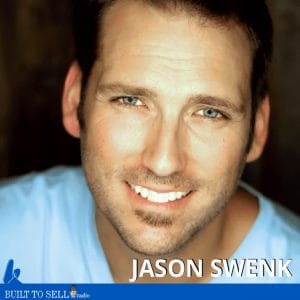About this episode
The hidden dangers of agreeing to an earn out when selling your business.
In this episode of Built to Sell Radio, you’ll hear how Jason Swenk built up his digital advertising agency from nothing to thirteen million dollars in sales before he sold it to a strategic acquirer in 2012. Swenk then went to work for the new owner — but the new owner’s business got acquired nine months later by an even larger firm. Swenk found himself two levels away from power and struggled to hit his earn out. What follows is a success story with a cautionary tale about the dangers of agreeing to an earn out as part of the sale of your business.

About Our Guest
Jason Swenk founded a successful digital agency, and over the span of 12 years as CEO championed in the digital advertising arena for clients such as Aflac, Lotus Cars, Hitachi, AT&T, Coke and Legal Zoom. Jason sold his agency in 2012 for 7 figures and went on to author a book and develop a smartphone nutrition app. Today, he continues creating proprietary business tools, client coaching, blog writing and podcasting. Operating out of his office of solitude in Atlanta, Georgia, Jason makes the most of his in-the-trenches experience and today’s cutting edge business strategies to help innocent businesses defend themselves against villainous competition.


